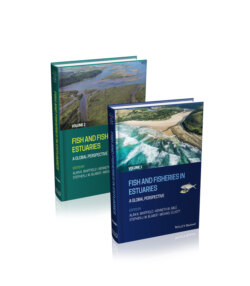Читать книгу Fish and Fisheries in Estuaries - Группа авторов - Страница 77
3.5.3 Impoundments and flow regulation
ОглавлениеImpoundments, dams and alterations in freshwater flow are clear impediments to estuarine connectivity and function and often their support of fish reproduction (Livingston et al. 1997, Grange et al. 2000, Niklitschek & Secor 2005, Ritter et al. 2008, Kettle et al. 2011, Schreier & Stevens 2020). Impoundments on rivers and freshwater abstraction can profoundly affect the physical and chemical aspects of watersheds (Pringle, 2000), particularly downstream estuaries. A perusal of published literature indicates that freshwater abstraction can lead to shifts in trophic structure in estuaries, including that for fish assemblages and their distribution (Ter Morshuizen et al. 1996, Livingston et al. 1997, Tsou & Matheson 2002, Rubec et al. 2006, Sheaves & Johnston 2008) and reductions in year‐class strength (Strydom et al. 2002, Staunton‐Smith et al. 2004, Halliday et al. 2008). Impoundments and dams on estuarine tributaries clearly limit access to spawning areas for anadromous species (e.g. Beasley & Hightower 2000, Freeman et al. 2003, Walter & Merritts 2008, Limburg & Waldman 2009, Mattocks et al. 2017). Effects have been especially problematic for many salmonids and acipenserids (Levings 2016, Quinn 2018, Faulkner et al. 2019, Zarri et al. 2019).
Reductions in freshwater discharge and flows to estuaries through removals of water for agriculture and urban use may have profound effects on reproductive and recruitment potentials (Freeman et al. 2003, Limburg & Waldman 2009, Strydom 2015, Mattocks et al. 2017). Dredging to maintain channels and diversions of freshwater modify flows, alter hydrodynamics and degrade spawning habitats. Amongst the best examples are those for the Sacramento–San Joaquin Delta and estuary system in California in which the salmonid Oncorhynchus tshawytscha, the osmerid Hypomesus transpacificus and other, primarily pelagic, estuary‐dependent species have experienced failed recruitment and declined dramatically in response to critically low freshwater discharges (Kimmerer 2002, Sommers et al. 2007, Moyle et al. 2016). Managing freshwater flows in impounded estuarine systems may improve retention of eggs and larvae and improve recruitment potential, as reported for the engraulid Engraulis encrasicolus in the Guadiana Estuary, Portugal (Morais et al. 2012). Alternatively, anthropogenically altered and excessive freshwater flow from interbasin water transfers can adversely affect nursery function (Strydom et al. 2002).
